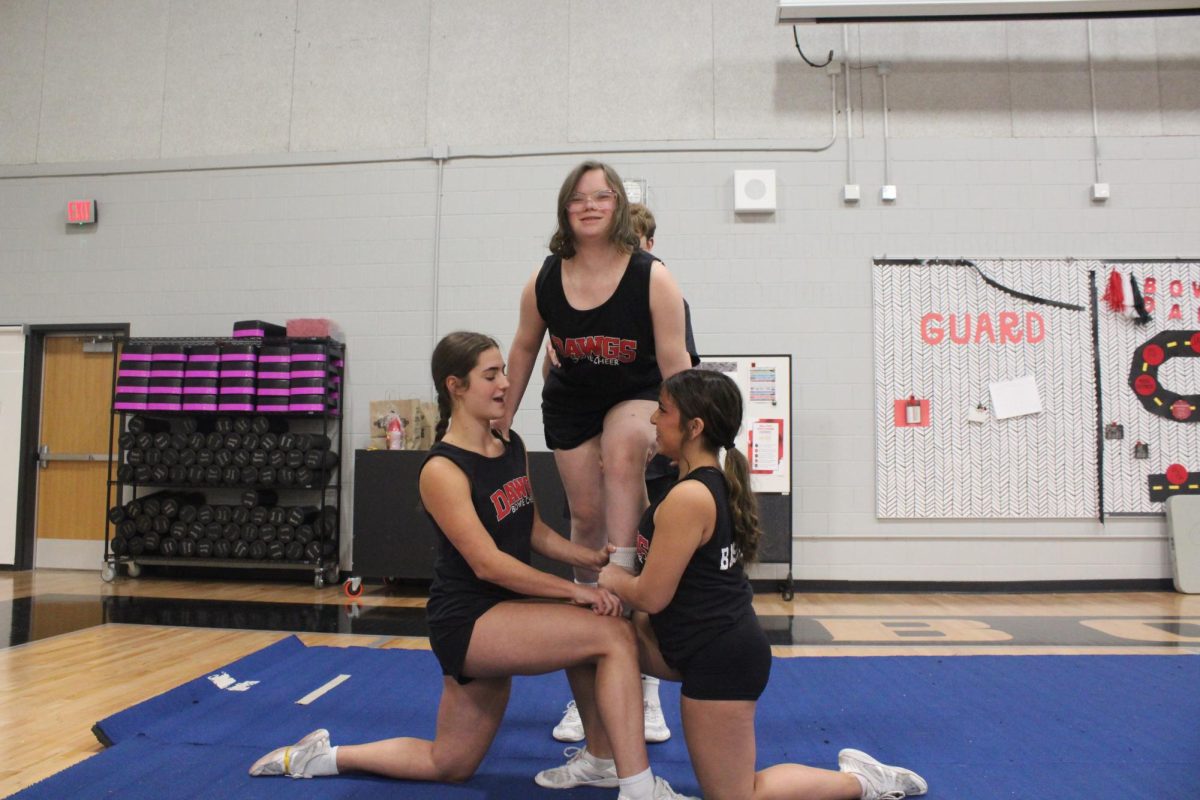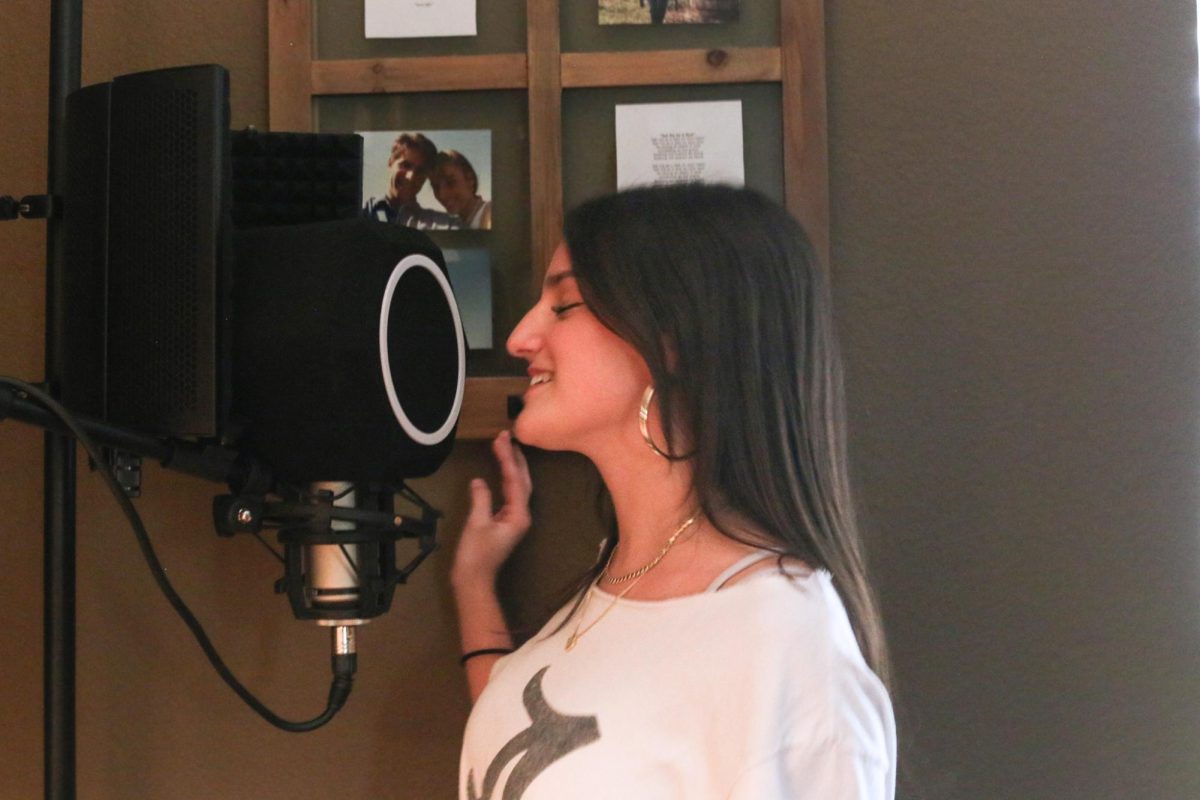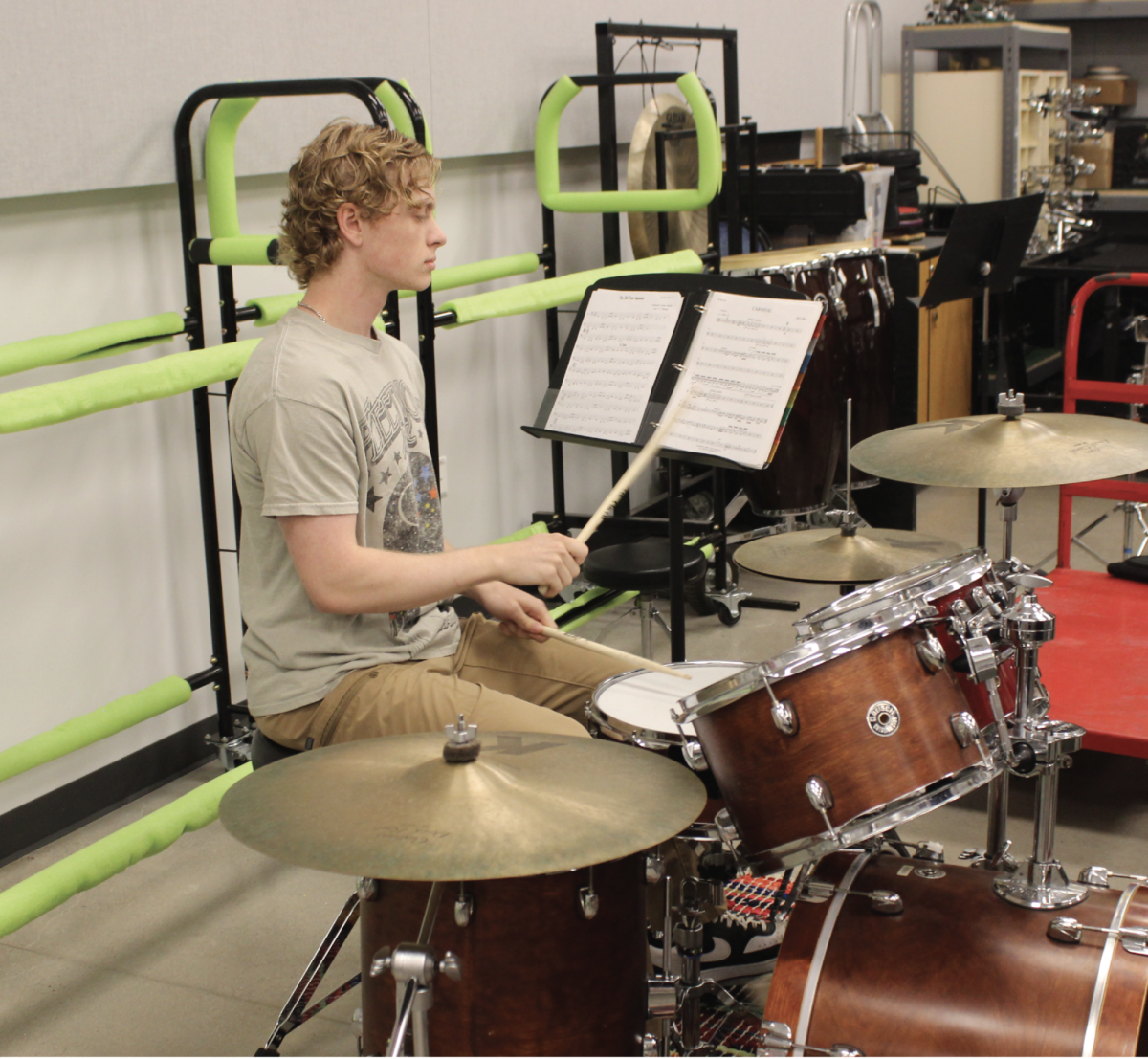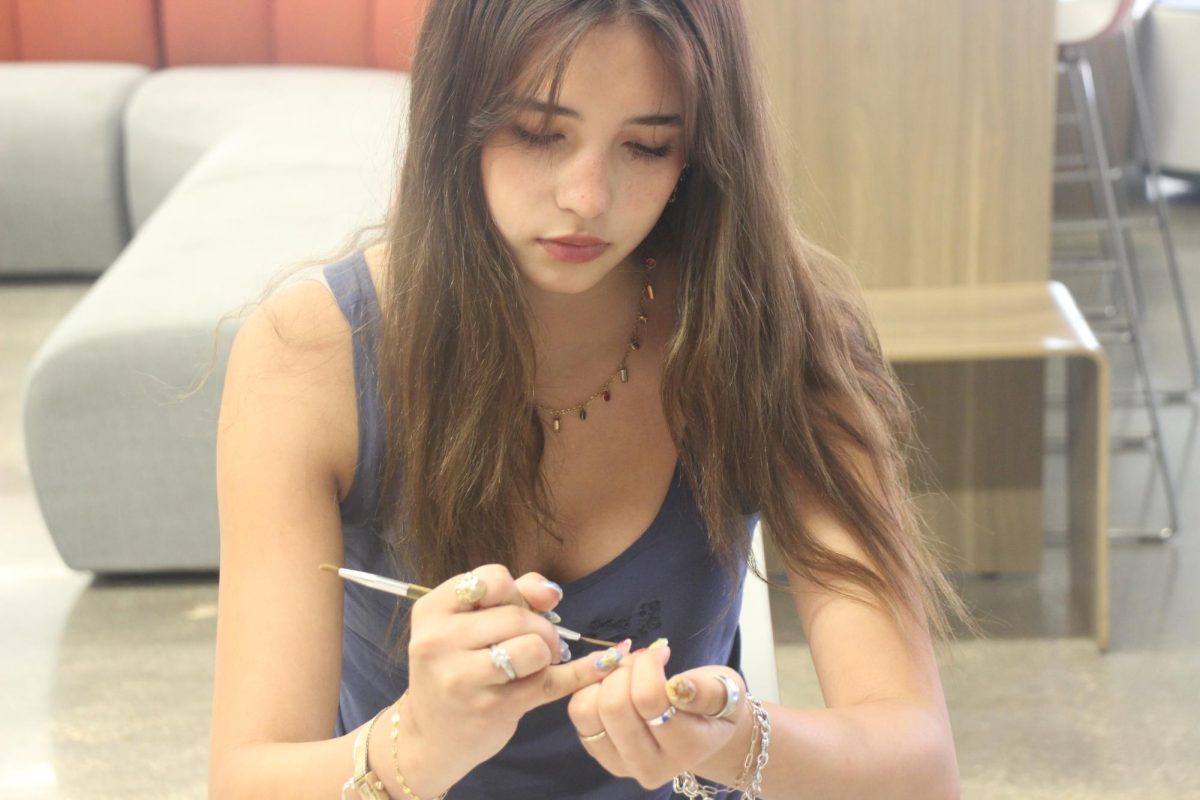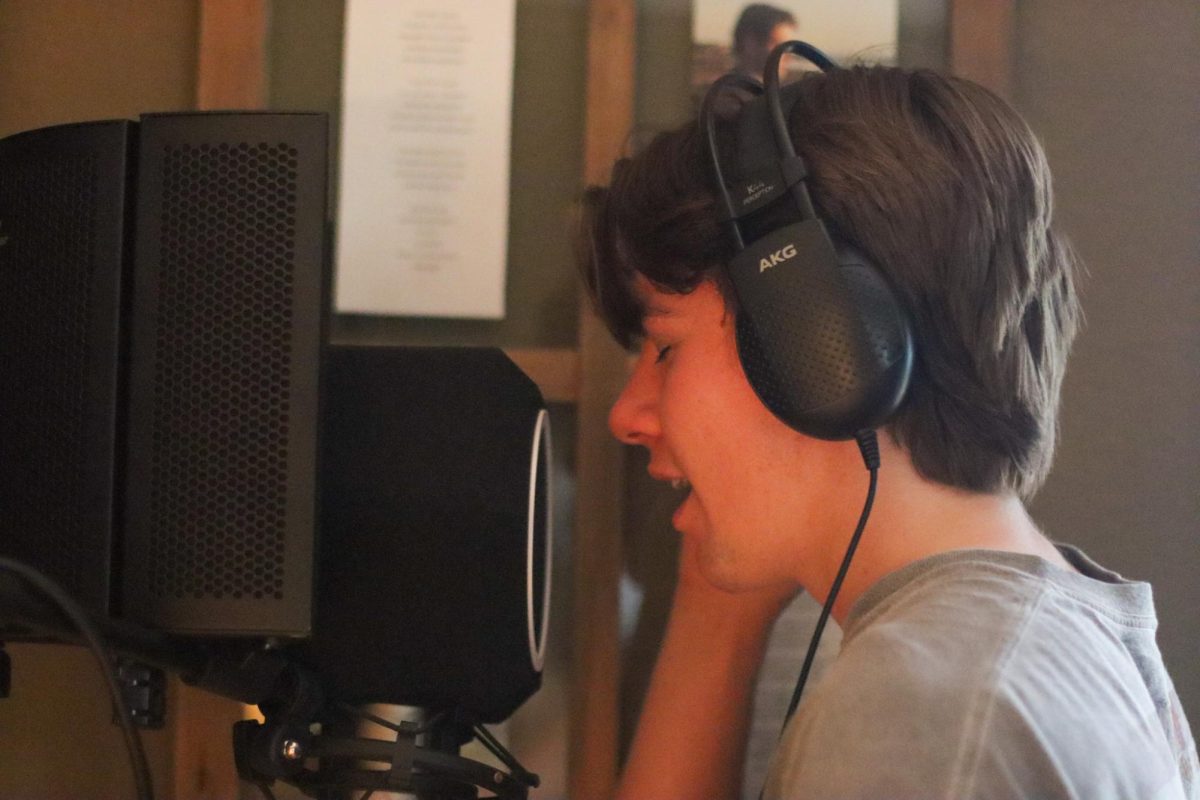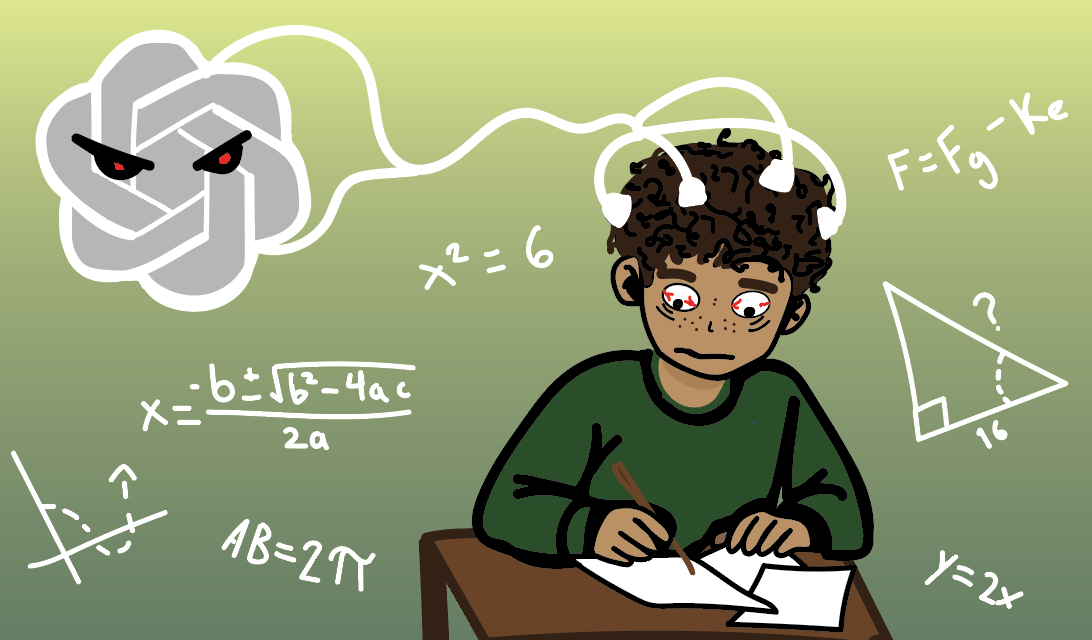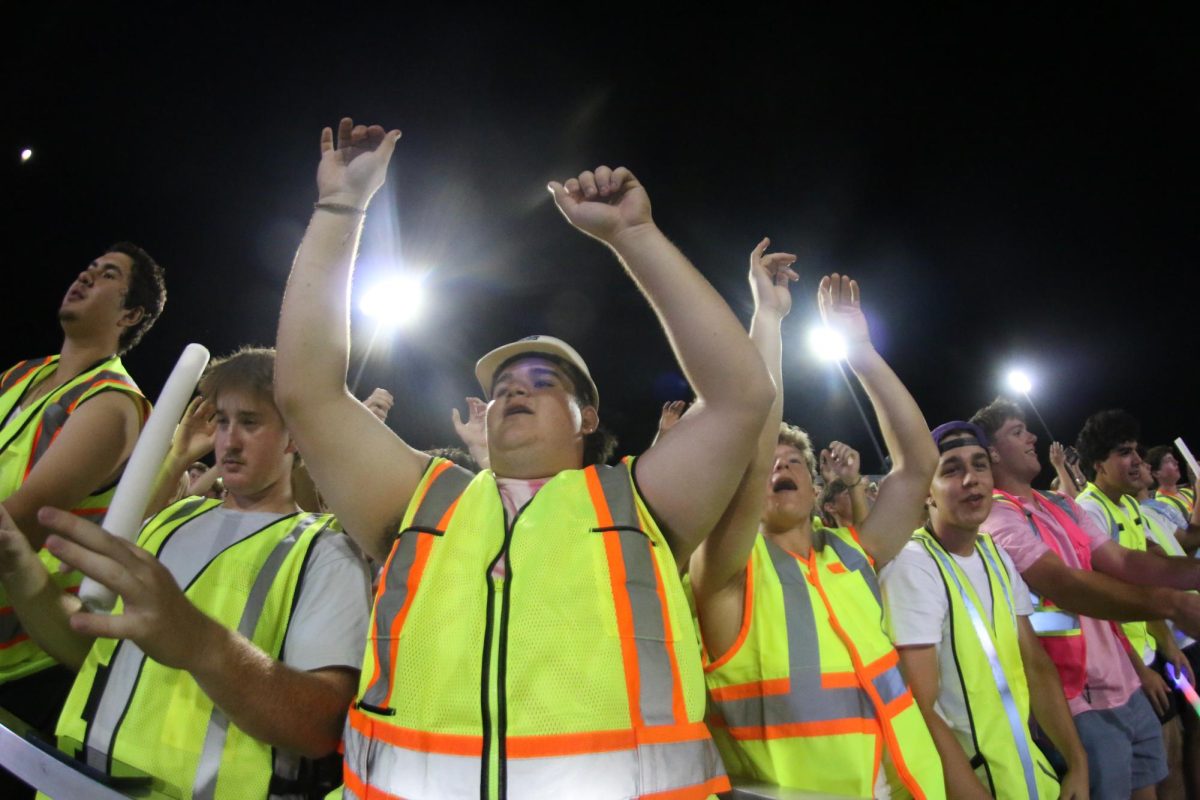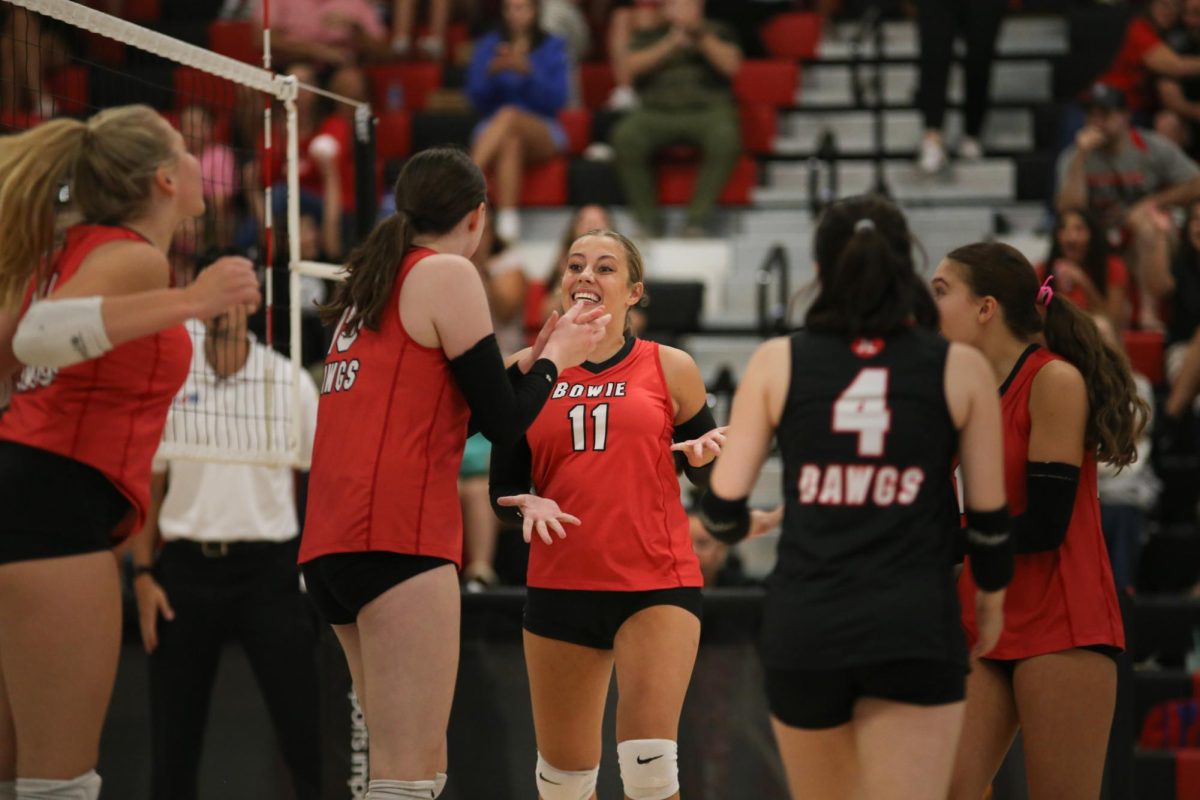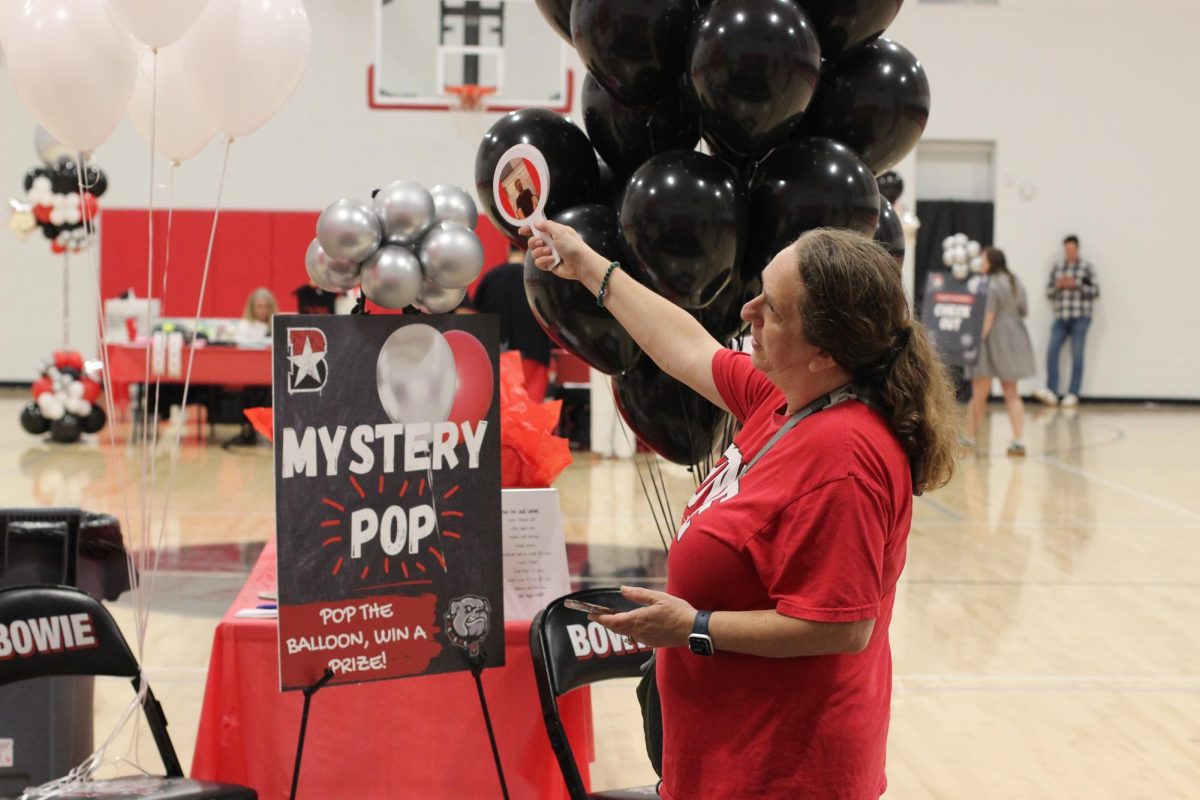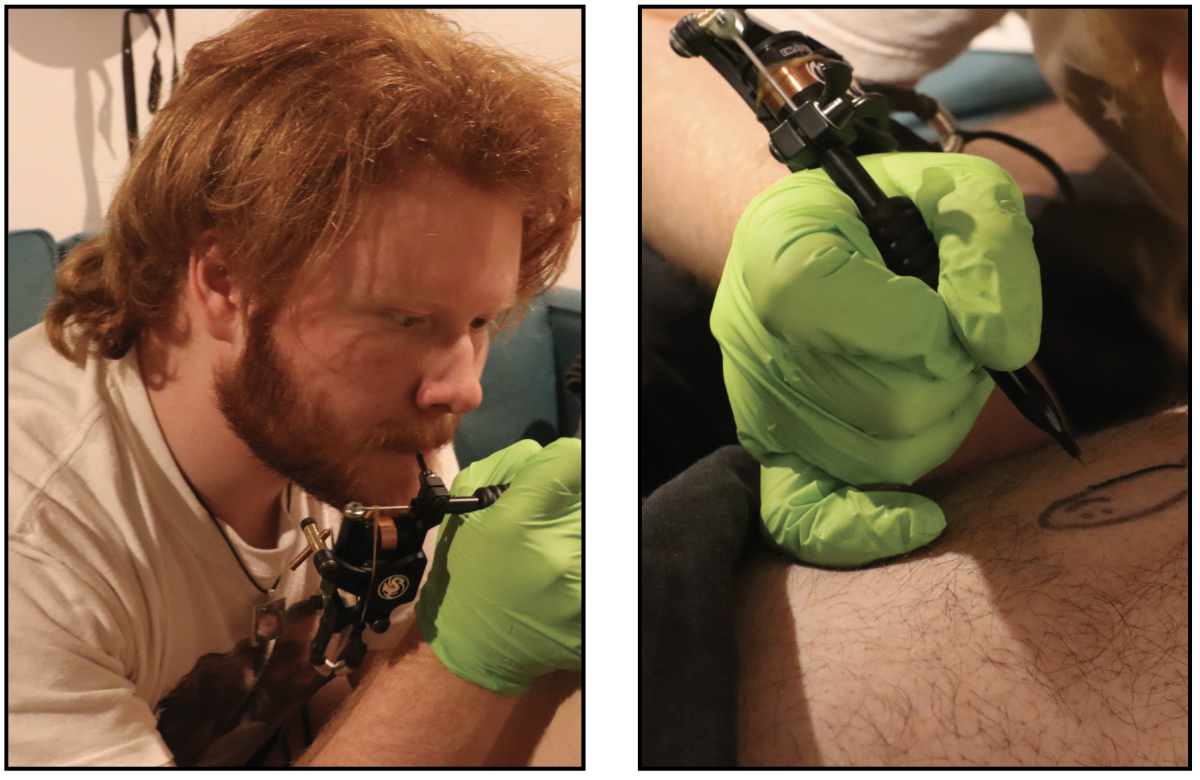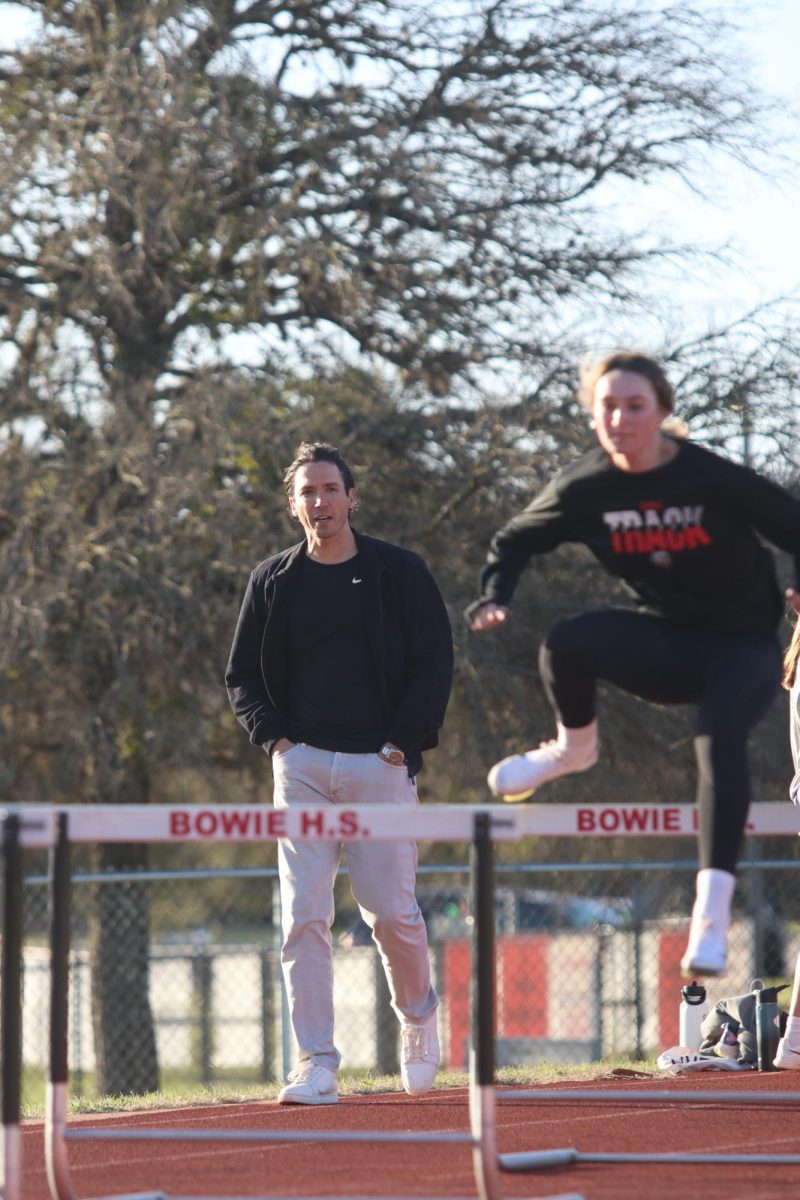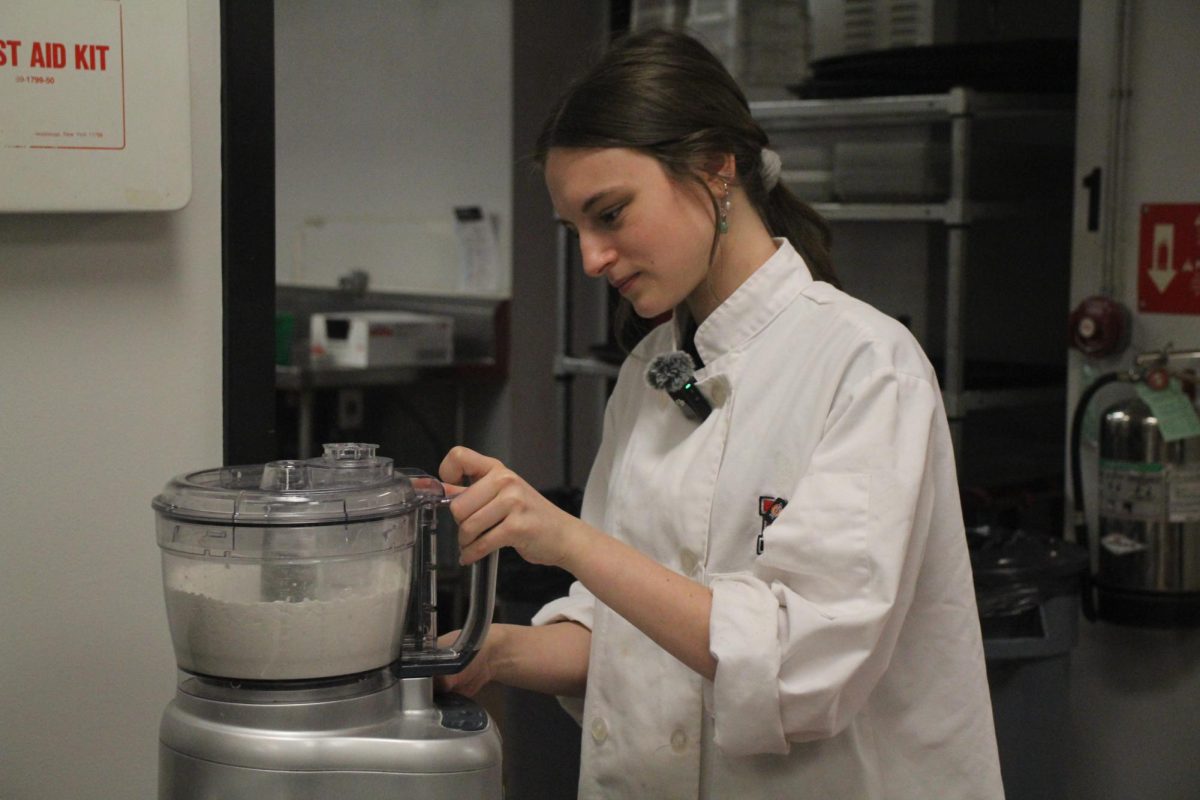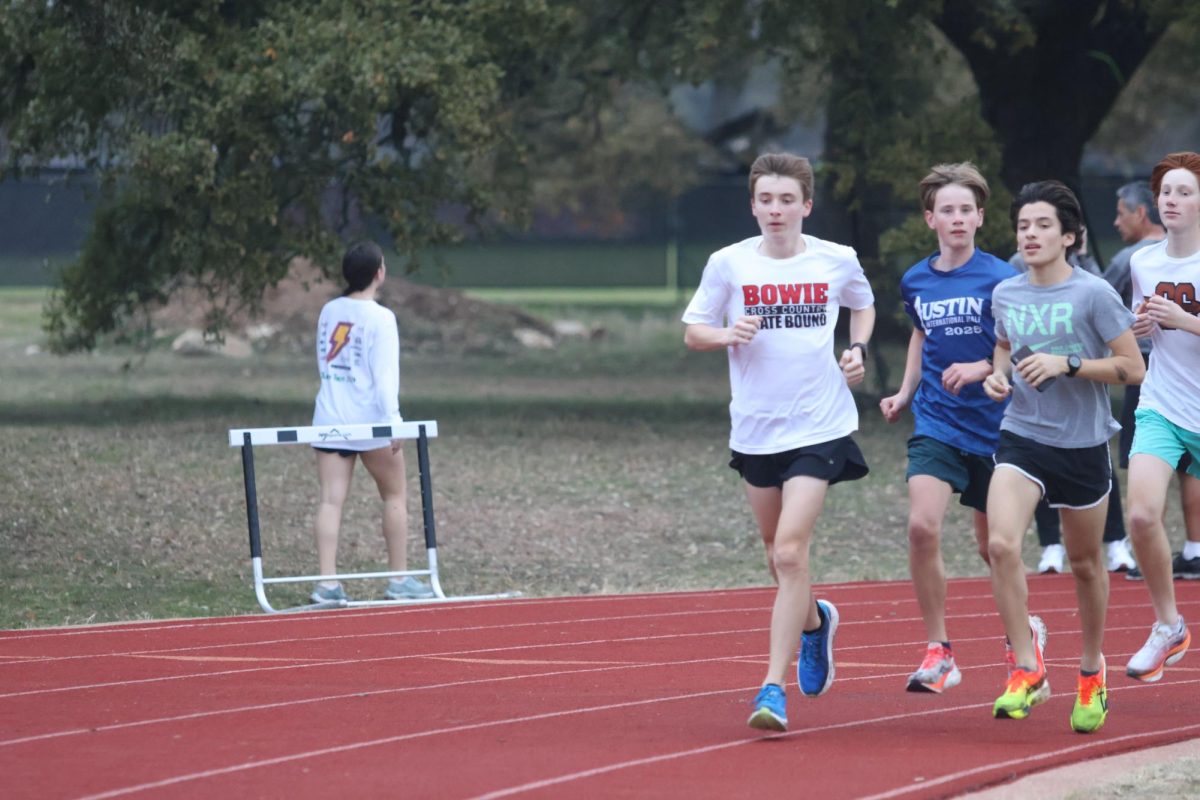Bristles brush against the wall as advanced art students place the finishing touches on the mural in the newly modernized fine arts building. A vibrate extension of artistic possibilities within the fine art extracurriculars.
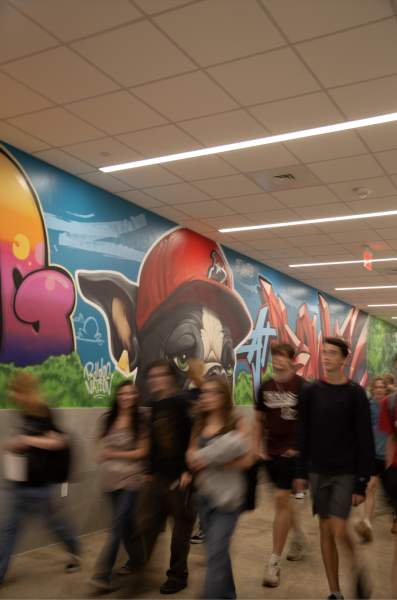
“It was cool to have such a hands-on experience with a large art project like creating a mural,” senior Olivia DeVore said. “There were a ton of different kids working on it over several weeks but the finished product turned out really nice, but it was cool to see how everyone’s own additions to the artwork come together.”
Along the heavily populated hallway is the second mural within the fine arts wing. Over spring break a local graffiti group, Color Cartel, led and established by artist Andrew Horner, created the new piece of art. They were commissioned by the administration to design a mural that encompassed Bowie’s pride in performance.
“Typically, my way of doing murals is to have one image, or one subject that is more than 80 percent of the mural, but for the large and narrow space we were given I felt it was appropriate to kind of break it into several different subjects throughout the wall,” Horner said. “That way, there are different pieces of art to look at as you go down the hallway instead of one large image. So, that is how the mural began to come to life.”
The timeline for the mural done by the Color Cartel was continuously adjusted. Despite the originally scheduled time for completion during spring break of 2023, the project did not officially commence until the first week of January this year.
“It was complicated to try and find a time to get the mural done because we can only work when students aren’t at the school,” Horner said. “So, we had to schedule around that and make sure no one was going to be in the building.”
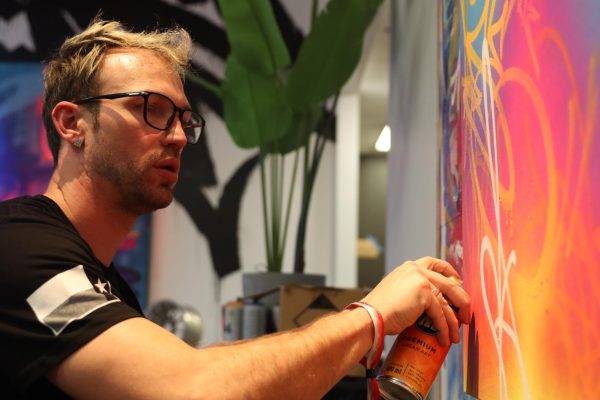
Graffiti and murals stand out against traditional art mediums and therefore pose difficulties with building a portfolio and gaining experience in the field.
“I personally really like enjoy the imperfectness of graffiti,” senior Lee Terrell said. “How it can be unique in that way and you can do a tag that some people may not think is up to standard, but that is kind of the point, that is just for you not for anybody else. I want to improve on my skills as a graffiti artist but there aren’t a lot of places to work on a large graffiti project.”
Horner began to break into the world of art in Austin nearly ten years ago. His transition was not only between locations but also his attitude towards graffiti as an art form.
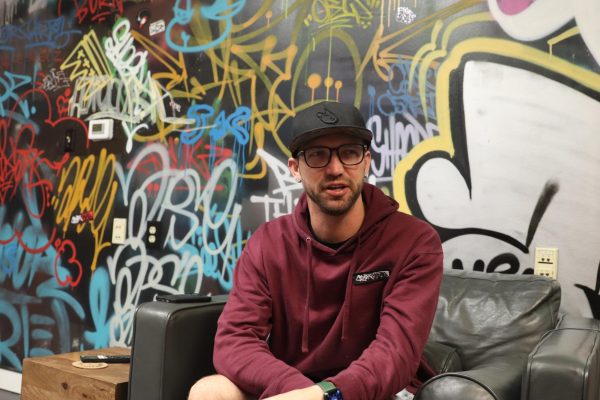
“When I got to Austin, I barely considered myself an artist I would say I just did graffiti,” Horner said. “For me, art and graffiti were not the same thing necessarily. I was also trying to figure out how to do graffiti and be Mormon at the same time, which is kind of complicated if you’re trying to be true to yourself and your beliefs.”
Art was a difficult career for Horner to put his full faith into, and start over in a new city.
“I just thought I wasn’t a very good fit, for the Austin scene,” Horner said. “However, after only being here for three months, I got an art solo exhibition at Texas A&M. After the art show I realized I had not been taking myself seriously as an artist, and it made me think about how I go about creating my art differently. But I still had a lot of things to change before I could fit in with the art scene in Austin.”
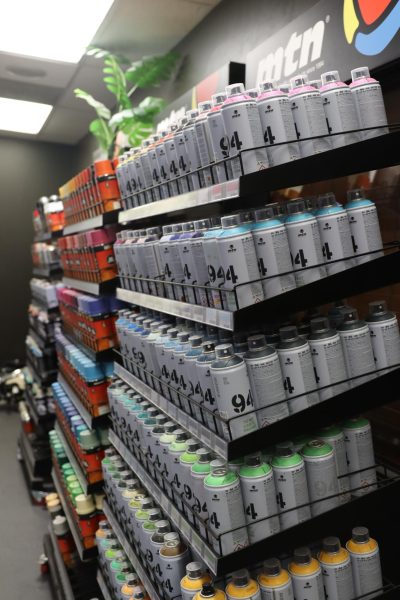
The road to understanding and committing to his passion for art was unpaved, but a moment of clarity enabled Horner to begin to take graffiti and his talent seriously.
“One night in college I was painting and it just hit me that this was what made my world simple,” Horner said. “I always felt like I was at the bottom of the totem pole. I was trying to make my teachers happy, my parents happy trying to keep the cops happy, trying to prove myself every day to people. But when I was doing graffiti I didn’t feel like I had to prove anything to anybody. I was just doing it leaving my mark. Sneaking around in the middle of the night when everybody was asleep it felt like the world was mine. After that night I thought to myself that I was going to get good and I was going to get good spray point and get permission to paint walls, and I was going to do it in the daylight.”
Several years later after moving to Austin, Horner created his own brand and graffiti group, Color Cartel in 2011. He was able to get a studio space and began to prompt commissioned murals, clothing, and individual pieces of art.
“I had worked on commissioned work through schools before but nothing of the size that we created for Bowie,” Horner said. “They specifically contacted me and said they wanted a mural installed in the school but they didn’t know where. So we went to the school and chose a wall that got a lot of traffic.
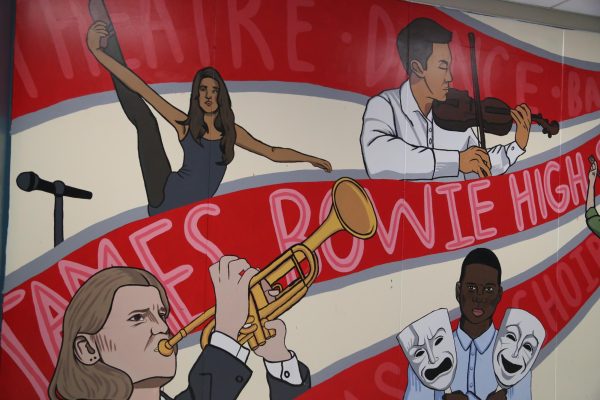
Horner has created a specific process for creating commissioned murals.
“After I talk to the people who commissioned the mural I then create three different concepts which we call thumbnails, just a rough sketch, and presented the ideas,” Horner said. “For Bowie they wanted it to be graffiti style, which is great for me, and, gave me a list of things to inspire to be inspired by. After creating a more detailed plan, six artists including myself worked on the project over that week, of spring break and were able to complete it.”
Every day students flood into the fine arts wing and see both murals on display. A creative depiction of the Bowie community.
“Traditional styles of art generally speak to a larger group of people, but graffiti is very controversial,” Terrell said. “So, it is cool to see it on a large scale, especially at a school.”



